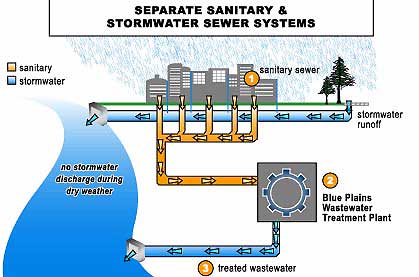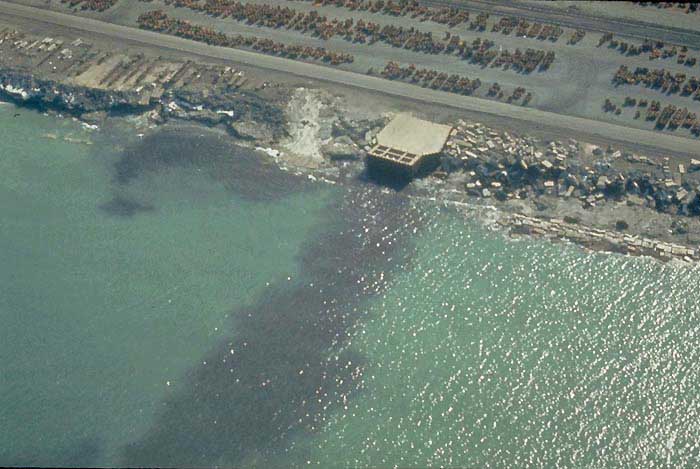We have also taken a glimpse into the major cause of ocean pollution-Non Point Source Pollution. This installment will cover what would appear to be an obvious source. But, as we are exploring the all the information available, it needs to be discussed as well.
This part of the series will cover Point Source Pollution. And, just as is sounds, it means pollution from a specific point or source. The EPA( The US Environmental Protection Agency) defines it as: “Any single identifiable source of pollution from which pollutants are discharged, such as a pipe, ditch, ship or factory smokestack” (Hill, 1997). As you would expect, there are several types of sources that stand out; Factories and sewage treatment plants for example. Factories, such as oil refineries, pulp and paper mills, chemical and electronics manufacturers, and automobile manufacturers can discharge one or many pollutants into their discharge waters-called effluents. Some factories discharge their effluents directly into a body of water, some treat it themselves, and yet others send it to sewage treatments plants where it is mixed with human waste water and then treated before being released into a stream, river, or ocean.
Another way some factories deal with their effluent is to mix it with urban runoff in a combined sewer system. Runoff, as we discussed last time is the major source of Non Point Source Pollution. It is then treated before discharging. However, if it rains too much, then a combined sewer system may not be able to handle the excess effluents and they are discharge directly into the nearest water body without being treated; less than the optimal results.
Unregulated discharges from Point Source Pollution can result in unsafe drinking water, or restriction of activities like swimming or fishing. Some of the chemicals may be harmless while others are toxic to people and wildlife. The degrees to which the levels of certain chemicals may be toxic depend on the concentration, rate of release, weather conditions, and organisms living in the area.

Large farms that raise livestock, such as cows, pigs and chickens, are other sources of point source pollution. These types of farms are known as concentrated animal feeding operations (CAFOs). If they do not treat their animals’ waste materials, these substances can then enter nearby water bodies as raw sewage, radically adding to the level and rate of pollution.
Not all countries around the world have the interest or ability to stringently monitor and regulate Point Source Pollution. Here in the USA, the Clean Water Act established the National Pollutant Discharge Elimination System. Under this program, factories, sewage treatment plants and other Point Sources must obtain a permit before they can discharge effluents into any water bodies.
Now, as individuals, it may seem difficult at best to be able to have an effect on Point Source Pollution. However, now that you are aware, at least in a minimal way of it origins, you can help in a couple of ways:
1/ As discussed in a prior installment, curb your own contributions to the Non Point Source Pollution; Thereby, reducing the amount of effluent into any system.
2/ Take a more active role in your own town or countries efforts to explore opportunities to reduce Point Source Pollution, even in the smallest way, as “Many hands make light work…”


